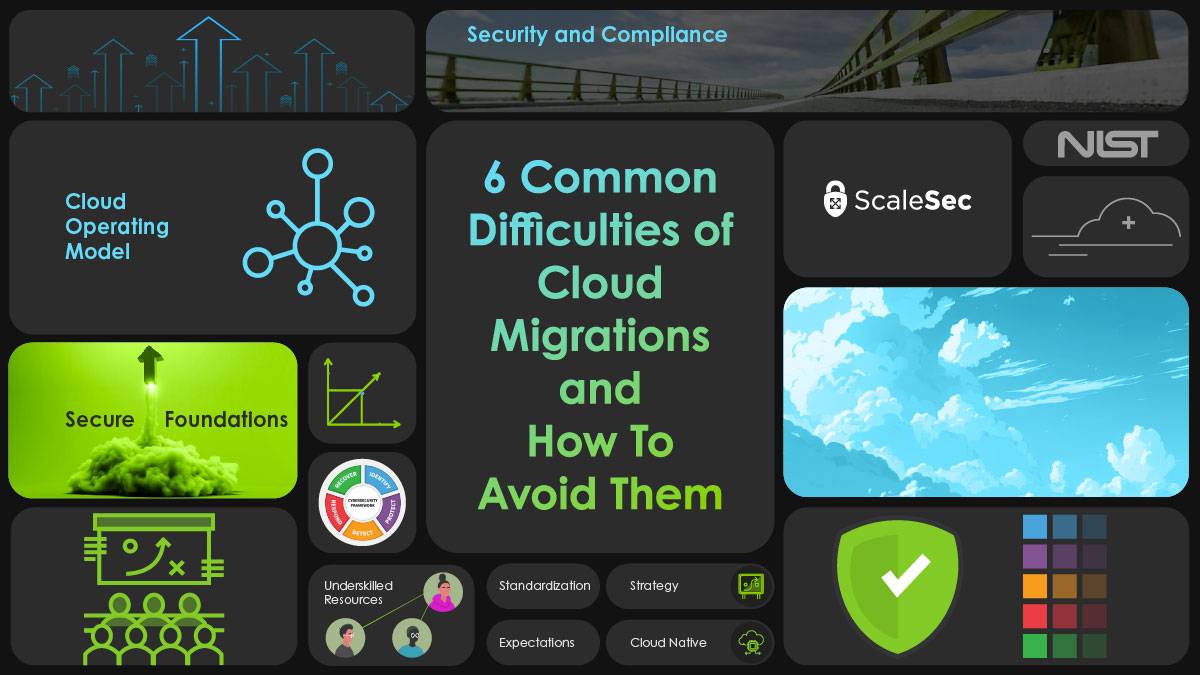
6 Common Difficulties of Cloud Migrations and How to Avoid Them
Moving to the cloud can provide many benefits, such as cost savings, improved innovation speed, and greater resiliency. But these benefits can only be achieved with comprehensive planning, time, and a clear strategy.
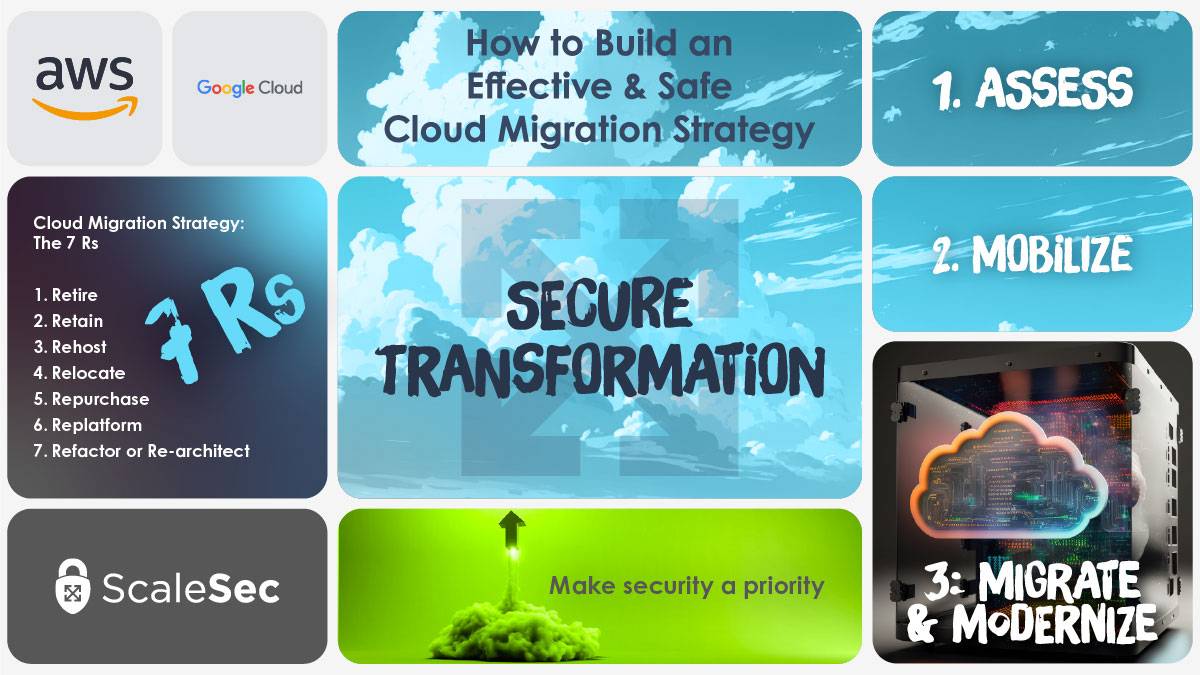
How to Build an Effective & Safe Cloud Migration Strategy
If your cloud journey is underway, but you haven’t achieved the expected benefits, you’re not alone. In this article, we’ll look at some common pain points of cloud migration and how to avoid them.
- Not Meeting Cost or Business Expectations
- Underskilled Resources
- Lack of Standardization and Security Foundations
- Not Leveraging Cloud Native Features
- Security and Compliance Concerns
- Not Adopting a Cloud Operating Model
1. Not Meeting Cost or Business Expectations
Defining what success looks like keeps your cloud migration on track. With clear definitions, business units may find more tangible value in moving to the cloud.
The business advantages of cloud migration need to be explained in a way that resonates with non-technical listeners to ensure buy-in and support. The business should be aligned with what is happening and provide insight into what they hope to achieve from migration to consider it a success.
Business KPIs (Key Performance Indicators) are a great way to track how the migration is faring and what value it provides to the business. Reduced time to market, capital expenditures, and human capital allotment are just a few examples of indicators that can show value to the overall business.
If your migration has already begun and is proving to be more expensive than anticipated, review your cloud environment for areas that can be optimized. Often, the cost benefits of the cloud are diminished by not updating workload architecture to take advantage of cloud features like autoscaling.
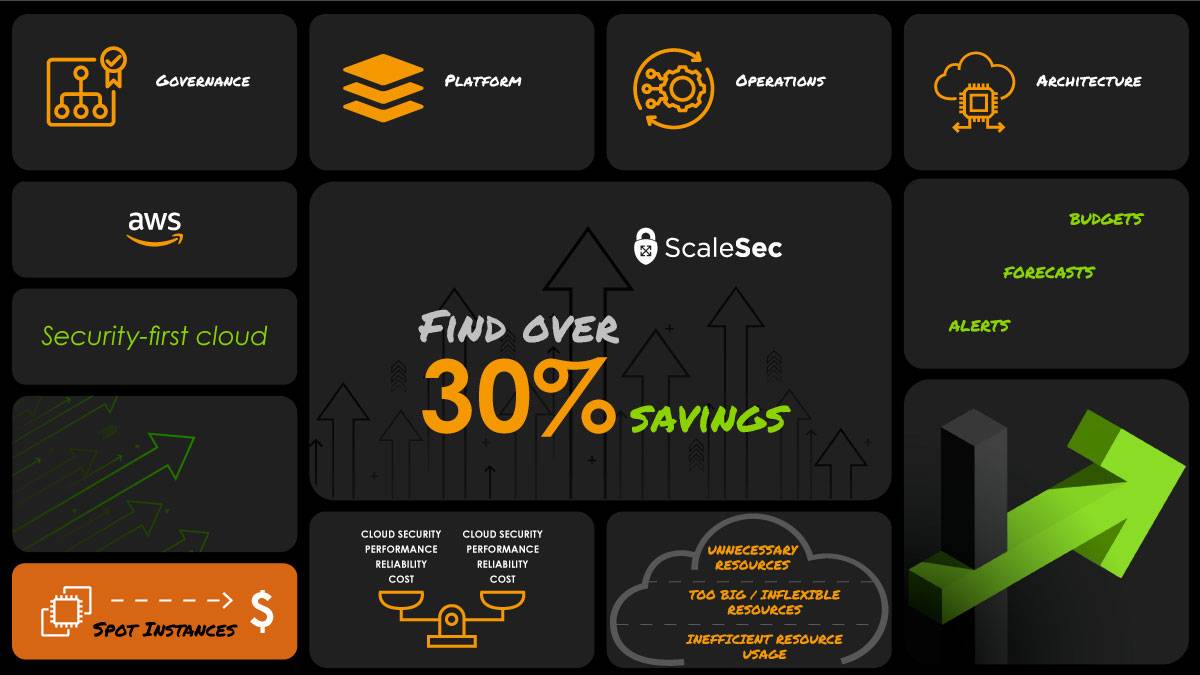
Consistently Optimizing AWS Cloud Costs
2. Underskilled Resources
If the cloud is new for your business, there are likely employees that aren’t well-versed in the intricacies of this new environment.
Creating a cloud-fluent culture and supporting your team’s learning is vital. This should begin before any technology changes are made. Your people can be your greatest asset on your journey to the cloud.
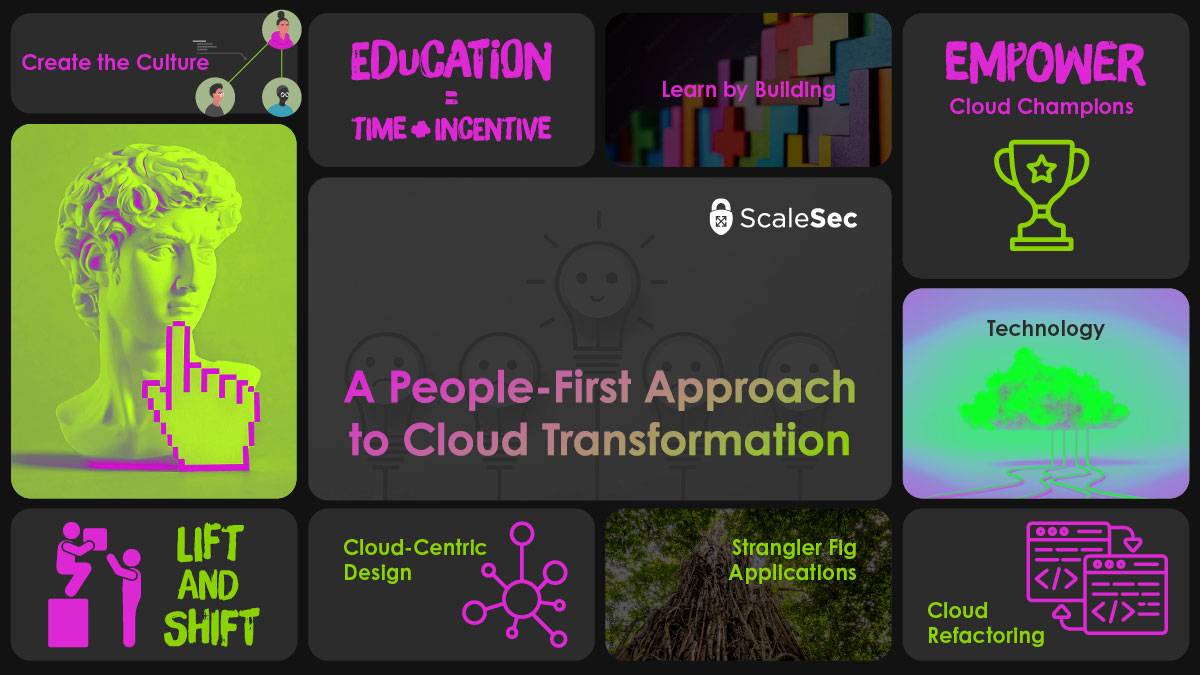
A People-First Approach to Cloud Transformation
Many skills your team already has can be transferred to the cloud, but they are not exactly the same. Give them the time, resources, and encouragement needed to upskill. You can start by making cloud certifications a part of performance review discussions and providing time and incentive for continued learning. As the team learns and adapts to a cloud-centric way of thinking, it will ensure that inefficiencies on-premise are less likely to follow to the cloud.
Empowering your teams in this way will also improve the speed and quality of your migration. By gaining experience through training and smaller projects, many of the stumbling blocks encountered by individuals new to the cloud can be avoided.
3. Lack of Standardization and Security Foundations
Starting a cloud migration without a plan and baselines can cause security and audit difficulties. Utilizing an existing framework can provide structure and standardization for your cloud environment.
Establish or adopt a framework to be your baseline – for example, the NIST Cybersecurity Framework (CSF). You can then customize and expand upon your choice. Security controls should be implemented early and integrated into all facets of your migration.
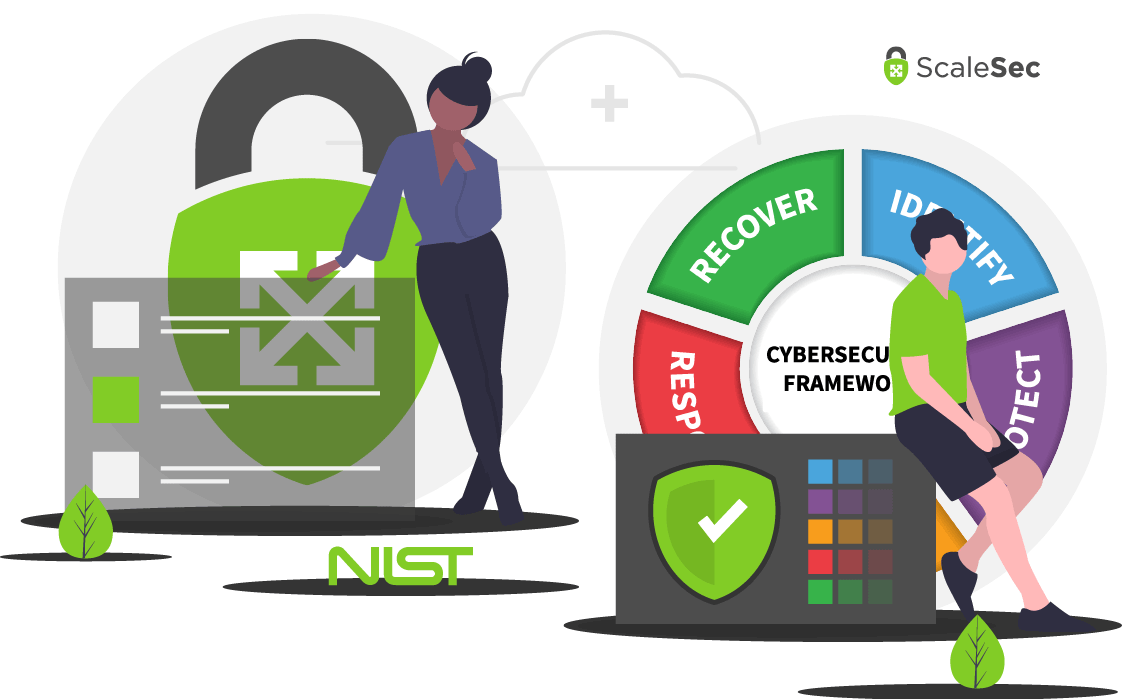
Security Protection Using NIST CSF
4. Not Leveraging Cloud Native Features
There are several different ways that workloads can be moved to the cloud. A strong understanding of how to best architect for the cloud is the best way to see a return on investment.
Cloud computing is made to be ephemeral and can be used to iterate quickly. Architecting your workloads to work this way can take some time and is likely very different from how they were on-premise. The ability to utilize only the computing power required can save money. The freedom to innovate within this atmosphere can be invaluable. However, “Lifting and Shifting,” a workload without optimization, can often be more costly than staying on-premise.
In addition to architecture, the culture of your development and security teams should start thinking in a cloud-native way. If your teams haven’t adopted the faster, more integrated, and iterative way of performing, you’re not taking full advantage of the cloud.
5. Security and Compliance Concerns
A cloud migration can be halted due to concerns with securing the environment. These concerns can be brought to light by business oversight or possibly a security incident.
To avoid these issues, a security plan should be in place from the beginning. Before implementing a technology change, ensure you know your environment, have a plan for baselines, and consider any applicable regulatory requirements - such as PCI or GDPR.
If you integrate a compliance framework from the beginning, you’ll have a solid foundation to build from. Down the line, this foundation can help you pass audits, adhere to stricter compliance requirements, and avoid security woes.
Here, additional details can be found on how and why to create a cloud migration security plan.
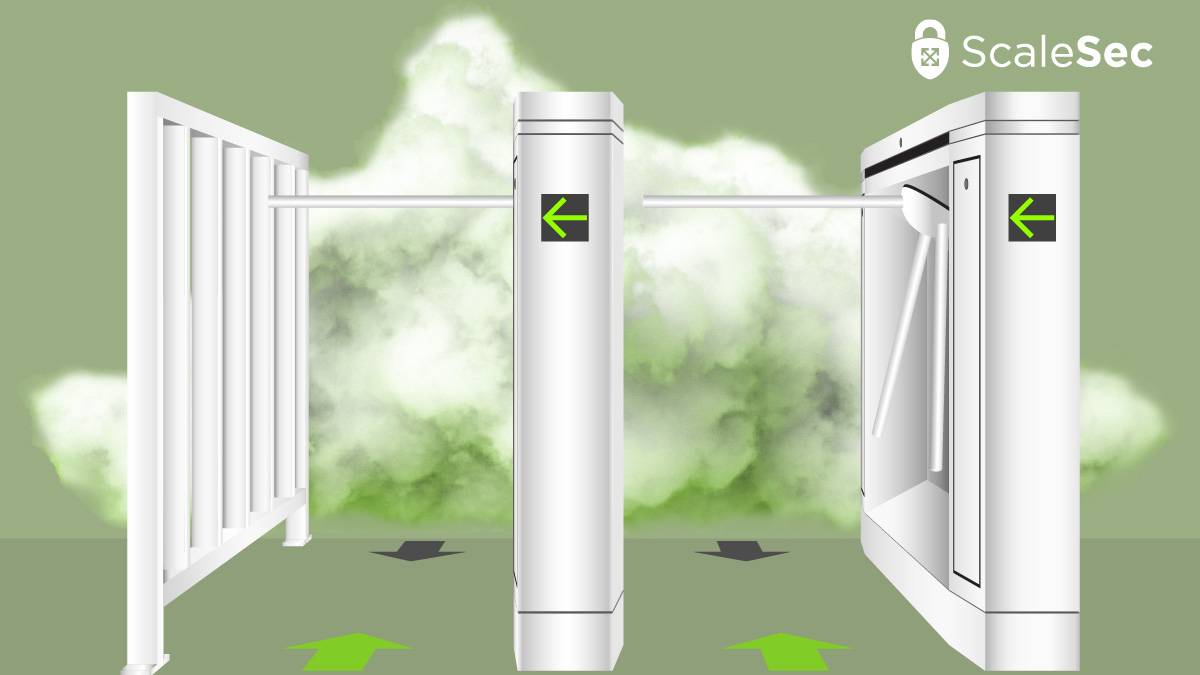
How cloud security enables your migrations
6. Not Adopting a Cloud Operating Model
A well-designed cloud operating model proactively addresses all of the issues discussed above and goes even further to set you up for success in the cloud.
While there are many intricacies that go into a cloud operating model, in its most basic form, it’s a framework for the way your organization adopts the cloud. Which can make or break the success of your migration.
One of the areas included in this is a focus on development teams and how they can best integrate with each other and this new environment. Enabling a platform team to focus on creating and managing cloud infrastructure for development teams can help your cloud environment run smoothly and scale efficiently. Utilizing the specialization of teams allows for each to do what they do best, which works in your favor… and theirs!
Maximize Cloud Migration Success
Whether you’re just getting started or if you’ve already taken steps towards a cloud migration, the best thing you can do is to have a solid strategy in place. If you want to create a strategy to build secure and cost-optimized systems in the cloud, ScaleSec would like to help. Get in touch with us today!
